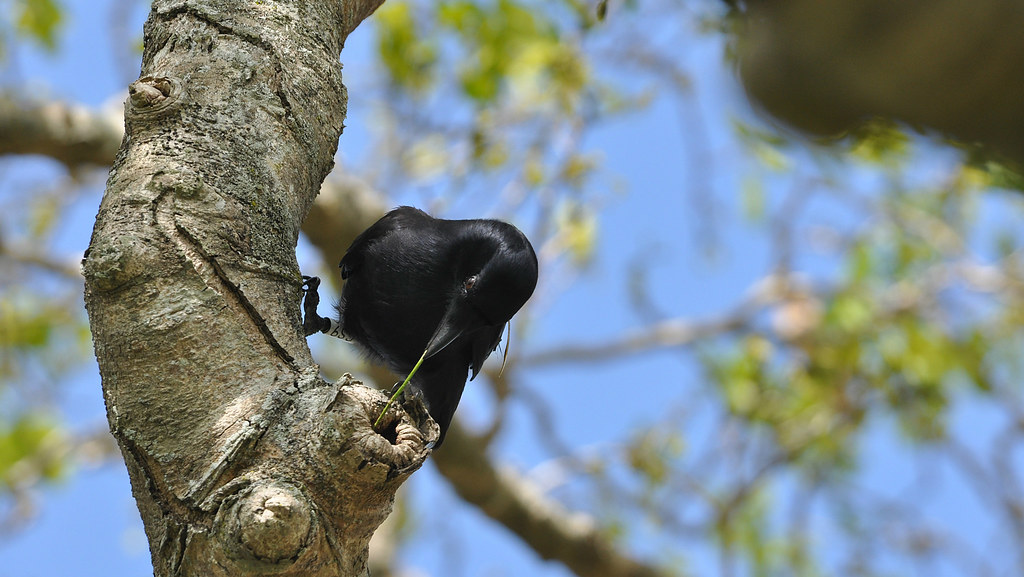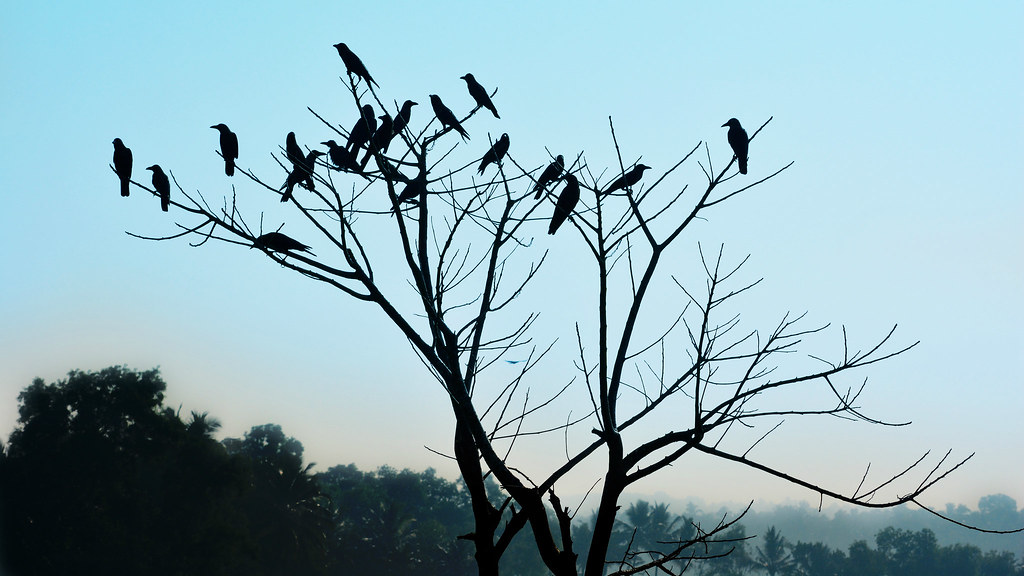An international team including scientists at the University of Bath has studied social networks to understand how information might spread within and between groups of tool-using New Caledonian crows, according to a paper published in Nature Communications.
Using tools to get food
The New Caledonian crow is well-known for its ability to make and use tools to winkle nutritious insects out of their hiding places.
Dr James St Clair, former PhD student at Bath and now at the University of St Andrews is lead author of the study. He explained: “Tool-use is unusual in animals, and requires special knowledge. Individuals not only need to know how to make tools, but also where, when and how to actually use them."
“Crows could perhaps learn this sort of information from their neighbours, so we looked at how skills might spread among groups of birds.”
To achieve this, the researchers analysed the social interactions of wild New Caledonian crows in their tropical habitat. Each crow was fitted with a high-tech, miniature spy tag, which communicated with tags on other crows and provided a continuous record of who met whom at any given time.
After recording crows’ encounters during ‘natural’ conditions, the scientists altered the environment to see how this would affect the social network.
Dr Christian Rutz, team leader and co-author of the study, said: “Because we were interested in tool-use behaviours, we reasoned that hard-to-reach food would bring the crows together, providing extra opportunities to learn new skills from one another.”
Sharing information
The team provided decaying timber full of wood-boring beetle grubs, a resource glut that can also occurs naturally when dead trees fall and break open.
Having recorded the social network before, during and after this experiment, the researchers then ran computer simulations to examine how information might spread.
Dr Rutz noted: “We found that providing food has a similar effect to putting a coffee machine or water-cooler in an office – individuals aggregate around the resource, and the spread of interesting information is accelerated!”
Professor Rob Fleischer from the Smithsonian Conservation Biology Institute in Washington DC, USA, who led the genetic analyses for the project, added: “It was exciting to see how non-family birds suddenly started aggregating under these conditions.”
Monitoring social networks
Until recently, it was so difficult to record social interactions of wild animals that it could take weeks or months of data collection before scientists could build a social network. This meant that they were effectively blind to changes in network structure occurring over shorter timescales.
Physicist and social network expert Dr Dick James from the University of Bath, who co-authored the study, said: “By using tags to record actual associations, minute-by-minute, we were able to explore network dynamics over very short timescales.
“This, combined with the large volume of data that our tags delivered, brings the study of animal social networks a step closer to large-scale studies of human interactions, in which mobile phone data or Facebook posts are used to build incredibly detailed ‘friendship’ networks.”
It has been suggested that, like humans and some great apes, New Caledonian crows have technological ‘cultures’. Scientists still don’t know how much of their tool-use behaviour crows learn from one another, but the current study has demonstrated that opportunities for information exchange abound, especially when important resources encourage crows to forage in the same place.


